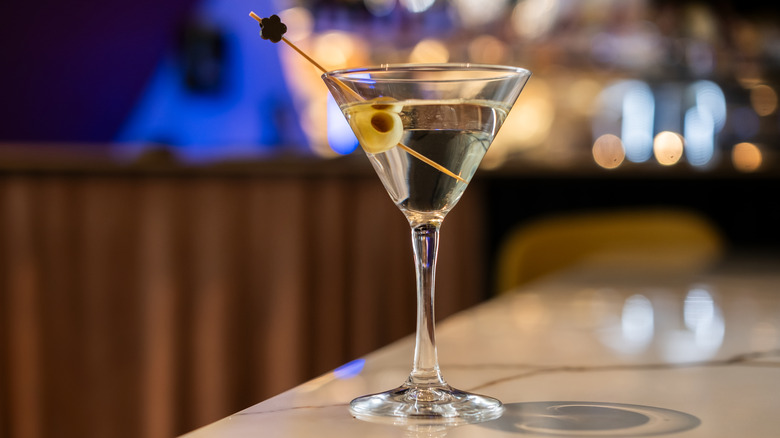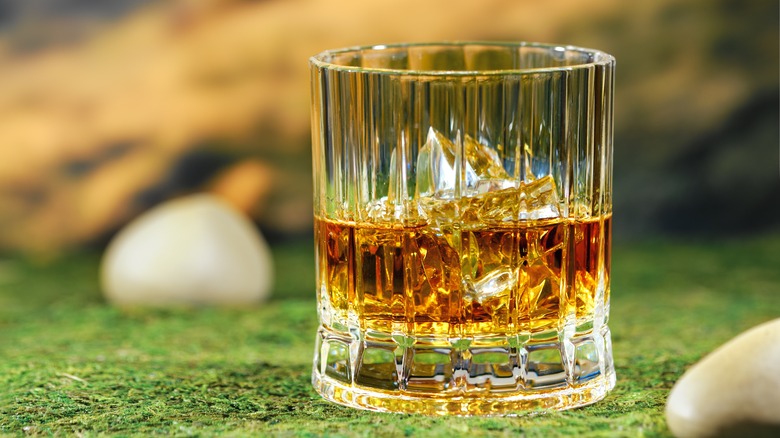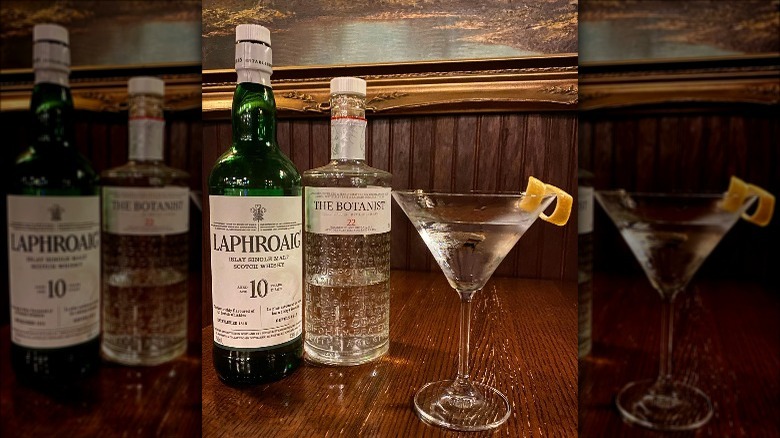What It Means To Order A Martini 'Burnt'
A burnt martini: It sounds like it's going to be served to you on fire — or at least singed or smoking — but that's not the case. While a basic martini is typically made with gin and dry vermouth, a burnt martini informs the bartender that you want some peaty, single malt scotch splashed into your drink.
Why would you do this? Well, why wouldn't you? The martini can be upgraded in all kinds of ways; it's an extremely versatile cocktail. Some people prefer theirs with vodka instead of gin. Some prefer them dry (less sweet, meaning less vermouth) and some prefer them wet (more vermouth). Some prefer them dirty, with olive brine and the addition of olives or capers. You can enjoy pickle martinis, spicy martinis, lemon drop martinis, and French martinis. A burnt one is, by any measure, a worthy addition to the list. Especially for lovers of smoky and herbaceous cocktails, the burnt martini is the best of both worlds.
Peaty single malts are essential for a burnt martini
In a burnt martini, a peaty scotch plays the starring role. And if you're looking for a peaty scotch, that most likely means you're looking for an Islay scotch (although peaty scotches are now being made in other parts of the world). These whiskies are named after Islay, an island located off the west coast of Scotland that's home to many distilleries that produce scotch with peat. The area is famous for these signature whiskies that are quite smoky, earthy, and slightly salty. They're also sharp and bring a kind of spicy clarity to mixed drinks.
In order to make an Islay scotch, distilleries use peat to fuel the fires that roast the barley, which lends a smoky flavor to the spirits. Peat is basically plant matter that has decomposed over years in an oxygen deprived environment. When the peat is burned, it releases a particularly scented smoke. According to Laphroaig, one of the most popular makers of Islay scotch, peat is burned in a kiln in order to infuse barley with that smoky flavor. Not all Islay whiskies are smoky, though — some distilleries focus on a fruitier or more floral profile that is smoother and more akin to traditional Highland scotches like Glenlivet or Balvenie.
Mezcal in your martini?
Why would you want to disrupt the clean, bright deliciousness of a classic martini by adding that splash of peaty scotch? From a taste perspective, it's all about contrasts. The combination of herbaceous gin and vermouth coupled with earthy, salty peated whisky ups the drink's intensity, but it's an interesting study in how combining different liquors can bring out unique nuances in flavor. In fact, some mixologists, including those on Instagram, are even crafting burnt martinis with mezcal for a savory flavor that "works better at enhancing the vermouth side" of the cocktail and creates "a considerably smoother mouthfeel."
This works so well because the taste of the peated scotch in a burnt martini is similar to certain mezcals that mix smokiness with notes of fruit or floral herbs. Mezcal, like tequila, is made from agave, which is a succulent native to Mexico. The flavor of a mezcal depends on a number of factors including how old the agave plant is and its production process. There are many types of mezcal encompassing a wide range of flavors. However, some are known for having a more robust flavor profile that can register as particularly smoky. This is because, before being distilled, the agave is roasted in an earthen pit, which gives it a warm spiciness close to that of a peated whisky.


